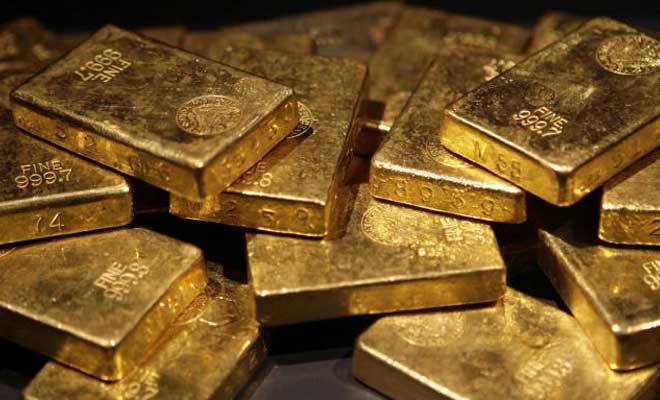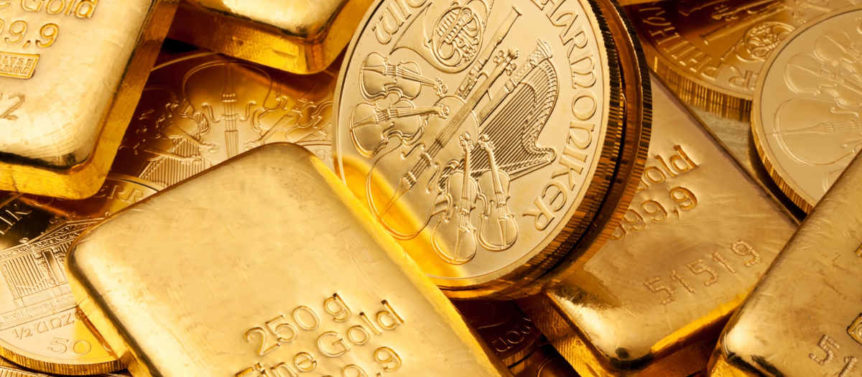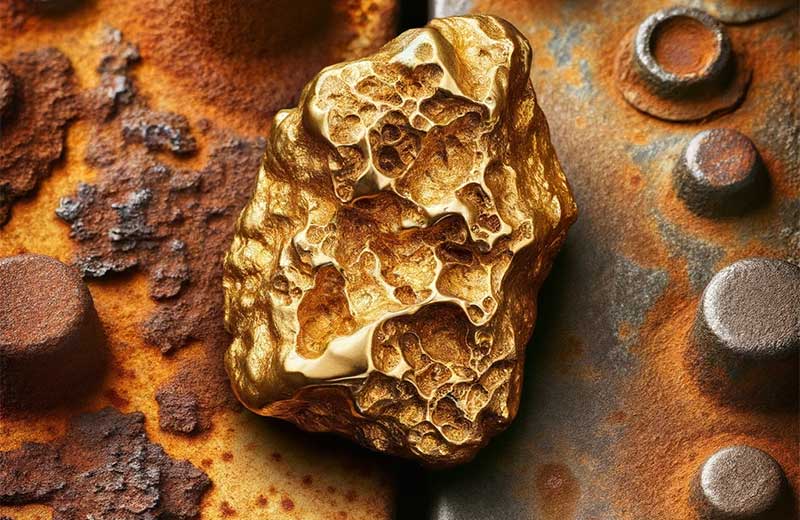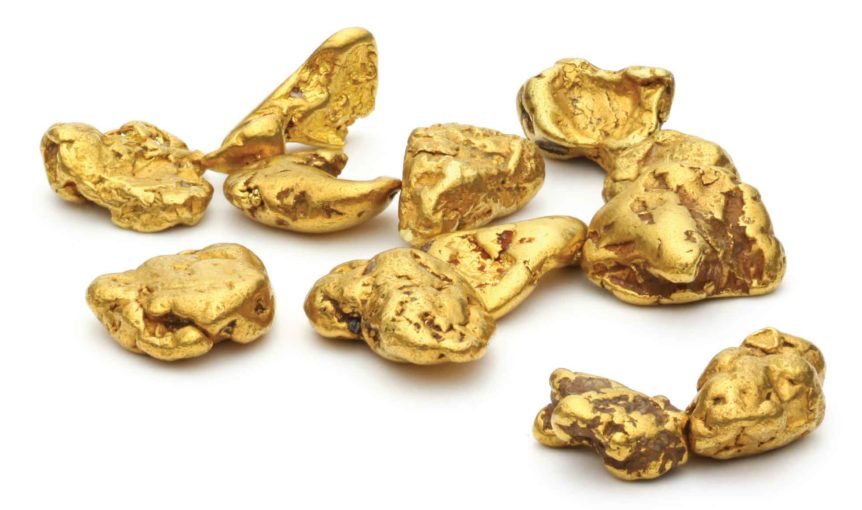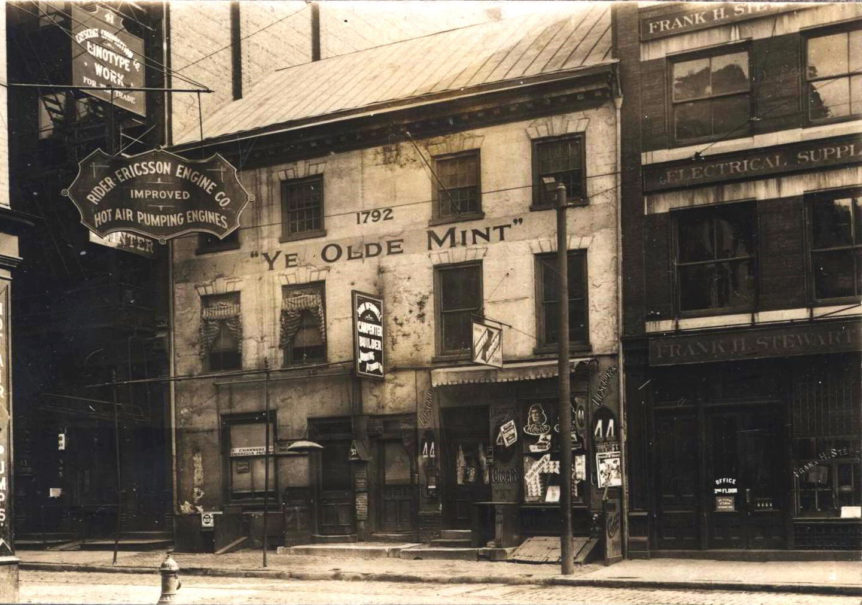When we think of cities that are struggling with debt, we tend to to look at Detroit, Chicago, and some of the larger cities in California. However the problem extends across the nation and into nearly every major metropolitan area, including Dallas, where the economy seems to be relatively strong. This widespread combination of debt and underfunded liabilities represents a significant factor in the looming debt crisis that threatens the financial system. And it could be a major catalyst for rising gold prices in the years to come.
Exchange-traded products continue to drive gold demand in 3Q16
The World Gold Council recently released a report on gold demand for 3Q16. In it they note that there was a sharp increase in gold investment primarily through Exchange Traded Products. While ETPs such as GLD stock mimics the gold spot price, it does not provide you with the true utility value of gold bullion. At some point, one has to ask themselves why they choose to buy gold and silver in the first place. For the vast majority of people it is more than merely to trade the price. They want to own physical silver and gold.
Central bank and jewelry demand may be down, however the average person is giving gold and silver a strong look based on the reality of our economic and geopolitical situation. They have come to the conclusion that we are in a period of time when the precious metals’ place as a hedge against inflation and/or geopolitical tensions needs to be activated.
Does Gold Rust? The Science Behind Gold
Gold, a symbol of wealth and luxury, has been treasured by civilizations for millennia. Its lustrous yellow shine and malleability have made it a favorite for jewelry, coins, and various artifacts. But a common question that arises is, does gold rust? Let’s delve into the world of gold and debunk some myths.
| Key Insights |
|---|
| Gold does not rust, because it doesn’t contain iron. |
| Gold is considered a Noble Metal and like other noble metals, it doesn’t react or mix easily with other substances. |
| Mixing gold with other metals like silver and copper may cause the gold to tarnish. |
| Maintaining gold items through proper care, such as avoiding chemicals and using gentle cleaning methods, can prevent tarnishing and preserve their luster. |
OWNx makes it simple to invest in precious metals.
Understanding Gold
Gold stands out in the world of metals. Its unique chemical properties make it resistant to many of the issues that plague common metals. Unlike metals like iron, which undergo chemical reactions when exposed to moisture and air, gold remains largely unaffected. This non-reactivity is one of the reasons gold has been so highly valued throughout history.
Does Gold Rust?
When we talk about rust, we’re referring to the reddish-brown compound known as iron oxide. This forms when iron reacts with oxygen and moisture. Rust is a form of corrosion, which is the irreversible damage of material due to chemical reactions. Since gold doesn’t contain iron, it doesn’t rust. However, it’s essential to differentiate between pure gold and its alloys. While pure gold remains rust-free, its alloys, depending on the metals they’re combined with, might be susceptible to some form of corrosion.
Gold and Other Forms of Corrosion
While gold doesn’t rust, it can be subjected to other forms of corrosion, especially when alloyed with different metals. Tarnish, for instance, is a thin layer of corrosion that forms on some metals due to their reaction with oxygen. Metals like silver and copper are prone to tarnishing. Gold, when alloyed with these metals, can show signs of tarnish. However, the tarnishing process is usually superficial and can be reversed in many cases.
Gold Alloys and Their Susceptibility
Pure gold, often termed 24-carat gold, is soft. To enhance its strength, especially for jewelry, it’s alloyed with other metals like copper, silver, or palladium. These alloys, while providing strength, can sometimes make the gold more susceptible to tarnishing. For instance, 14-carat gold jewelry, which is about 58.3% gold, might tarnish faster than an 18-carat piece, which contains 75% gold.
Caring for Gold Items
Gold items, especially jewelry, require care to maintain their luster and prevent tarnishing. Here are some tips:
- Avoid exposing gold to chemicals like perfumes or cleaning agents.
- Remove gold jewelry when washing hands or showering.
- Store gold items separately to prevent scratches.
- Use a soft cloth to clean gold items gently.
OWNx makes it simple to invest in precious metals.
Gold’s Interaction with Other Elements
Gold is known as a Noble Metal. In simple terms, think of noble metals as the aristocrats of the metal world – they don’t like to mix or react easily with other substances. This quality makes gold, and other metals like platinum and palladium, resistant to tarnishing and corrosion. However, when gold is combined with other metals that aren’t as noble, like copper or silver, it can become more reactive. For instance, if gold is mixed with copper, it might start to tarnish when exposed to certain chemicals in the air. But remember, it’s the copper in the mix that’s reacting, not the gold itself.
The elements with the black background below are typically considered to be Noble Metals.
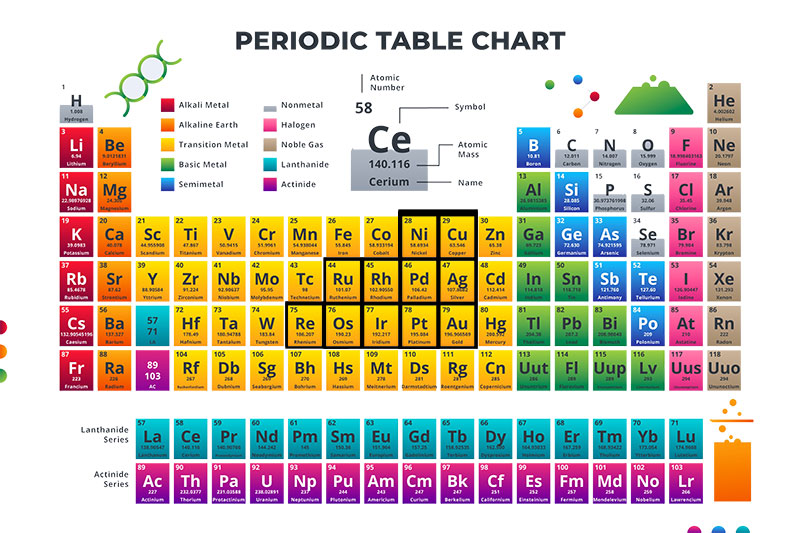
Other Noble Metals
Commonly, gold, platinum, and platinum group metals like ruthenium, rhodium, palladium, osmium, and iridium are classified as noble. However, this varies by field. In physics, only copper, silver, and gold are considered noble, while dentistry may exclude silver due to its reactivity in the mouth. In a broader chemical context, the list can include additional elements like copper, mercury, and even some semimetals. Therefore, what is considered a “noble metal” can change based on the specific criteria and context.
The Fundamental Stability of Gold
At the atomic level, gold is less reactive than many metals. It doesn’t easily lose or gain electrons, making it stable and resistant to many chemical reactions. This stability is why gold doesn’t corrode like iron or tarnish like silver. It’s also why gold has been used for centuries in various applications, from jewelry to electronics.
Gold in Everyday Life
Gold’s resistance to corrosion and its excellent conductivity make it valuable in many modern applications. For example, gold is used in electronics because it doesn’t corrode, ensuring that devices function reliably. Gold coins and bullion are also popular among investors as a hedge against economic instability, given gold’s enduring value.
Cleaning and Caring for Tarnished Gold
If your gold jewelry or items show signs of tarnish, don’t fret. Here’s how you can restore their shine:
- Mix a few drops of mild dish soap with warm water.
- Soak the gold item in this solution for about 15 minutes.
- Gently scrub the item with a soft cloth or a soft-bristle brush.
- Rinse with warm water and air dry.
For more stubborn tarnish, a paste of baking soda and water can be used. However, always test a small, inconspicuous area first to ensure it doesn’t damage the item.
Gold’s Place in the World of Metals
In the grand scheme of metals, gold holds a special place. Its unique properties, combined with its rich history, make it one of the most sought-after metals. While it doesn’t rust or tarnish easily, understanding how to care for gold and its alloys ensures that your gold items remain pristine for years to come.
In conclusion, gold’s enduring luster and value are not just due to its beauty but also its chemical stability. By understanding the properties of gold and how to care for it, we can ensure that our gold items remain as radiant as the day we acquired them. Whether you’re wearing a gold ring, investing in gold bullion, or using a device with gold components, this precious metal’s resistance to rust and tarnish ensures it stands the test of time.
OWNx makes it simple to invest in precious metals.
FAQs
Gold, being one of the precious metals, doesn’t rust in water. However, if the gold is alloyed with other metals, those metals might react with water or other chemicals, leading to discoloration.
Rust is a reddish-brown compound that forms on iron or iron alloys. Tarnish, often seen on silver coins, is a thin layer of discoloration that forms on metals. If a gold item shows signs of discoloration, it’s more likely to be tarnish than rust.
Real gold doesn’t rust. If an item labeled as gold shows signs of rust, it’s likely not actual gold. Other methods include the hallmark test, magnet test, and professional appraisal.
Pure gold is a soft metal. To increase its strength and durability, especially for jewelry, it’s alloyed with metals like copper, silver, or nickel.
While gold is highly resistant to corrosion, in very rare and specific chemical environments, it might corrode. However, such conditions are uncommon and not encountered in everyday life.
Platinum and palladium are two metals that, like gold, are resistant to corrosion and tarnishing.
Tarnishing can occur on gold alloys, especially those with metals like copper or silver. Pure gold doesn’t tarnish, so if your gold jewelry tarnishes, it might indicate the presence of other metals in the alloy. Cleaning tarnished gold can restore its original luster.
Silver coins, unlike gold, are more reactive and can tarnish more quickly when exposed to certain environmental factors. Gold’s resistance to tarnish is one of the reasons it’s valued among precious metals.
To clean tarnished gold and restore its shine, a gentle cleaning solution can be used. It’s essential to ensure the method is suitable for gold and won’t affect any underlying metal in an alloyed item
Gold bars, renowned among precious metals, are notably resistant to tarnish. However, if alloyed, the underlying metal might influence its tarnish resistance, leading to subtle gold tarnish over time.
To rejuvenate tarnished gold, a mild cleaning solution is advised. It’s crucial to ensure the cleaning method is gold-friendly and doesn’t compromise any underlying metal in alloyed pieces.
3 Reasons Why 2017 Could Be Good For The Price of Gold and Silver
This spring we sent out an alert to our clients stating that we believed the price of gold had finally broken out of a four-year decline. Since then, gold has made a confirming move to over $1,370 per ounce. The recent drop to the $1,250 level may leave some wondering if this move was a false move or just a healthy pullback.
When bull markets turn, they rarely do so in dramatic fashion. The painful bear market is still fresh in people’s minds, thus initially the market climbs what long time market participants call a “wall of worry.” Where does the price go from here between now and the beginning of 2017?
The answer is, nobody knows for certain. One can draw on history to make a case for a gold to pull all the way back and retest the $1,050 breakout level. Others can make a case for the immediate resumption of the upward trend. We take no sides in these predictions. Many a gold dealer has used hype and cheer leading to drive short term sales. That’s just not our style.
Rather, we like to focus on why our clients own gold and silver in the first place and how to best use our technology platform to serve them as they seek to achieve their goals in 2017 and beyond. And as we turn the corner on 2016, there are several factors that we believe support the resumption of a longer term bull market in gold and silver.Read More
Three Reasons to Consider Automatic Purchases of Gold and Silver Bullion

Owning gold and silver creates different images in peoples minds. Some of our clients are active swing traders who thrive on the swings in the spot price of gold and silver. To them, “volatility” is literally gold. They live in the world of Now, and to them we say – more power to you. For the vast majority of our clients however, their reasons to own gold and silver transcend short term trading profits. They are interested in the long-term (3-5 year+) benefits that gold and silver provide.
As it is, today we live in a world where long established trends are changing. And while gold and silver bullion shine such an environment, the path is rarely a straight line up. This is more so when today paper proxies for gold and silver (such as GLD stock) and an instantaneous access to information on global financial and geopolitical events can amplify short and even intermediate term price swings.
The Alaskan Town that Still Pans for Gold Bullion
The original residents of Chicken, Alaska, were a “ragtag bunch of gold prospectors.” The town is 40 miles west of the Canadian border and 90 miles from Eagle, Alaska. It has a population of 23 residents, except for when 16 of those residents leave in the winter and the population drops to just seven people. Between mid-October and mid-March, there is no road in or out of the town.
“We’re not snowed in,” one resident told The Atlantic. “The rest of them are snowed out.”
So why does anyone besides the 7-23 residents care about its existence?
Because the people of Chicken still pan for gold bullion.
Canadians Jon Juneau and Richard Harris made Alaska’s first significant gold strike in 1880, according to the article. A little over a decade later, tens of thousands of men traveled from all across the world to Alaska to pan for the precious metal in hopes of striking it rich. In 1891, gold was found in Chicken Creek and a makeshift settlement grew up around the claims. The town had close to one hundred residents at the peak of its days, the article said.
However, it is the gold that beckons these residents to Chicken. The article explains the story of Bill Dunlevy, head of the Anchorage chapter of the Gold Prospectors’ Association of America. But the first thing you would notice about Dunlevy is the five-ounce gold nugget he wears around his neck.
Dunlevy has lived in Alaska for 40 years and has 12 claims – that is, claims to found gold. He discovered the nugget around his neck in Turnagain Pass outside of Anchorage. The article explains that Dunlevy has never cashed in on his findings. Based on the gold spot price, he estimates that he has claimed upwards of $100,000, which he keeps in his “bragging box.” He lets other prospective miners look at his treasures and says he gives “people the thrill of a lifetime.”
Dunlevy and other miners make an annual trip to Chicken 400 miles away. The article explains that he works in a drysuit and dives underwater to reach the creekbed. The water does not freeze until its temperature drops below 18 degrees due to the current’s strength. So Dunlevy and his comrades will sit in their tent while watching the thermometer with the heat on.
“As soon as it gets to 18 we get in. You gotta pan quick ‘cause the water freezes in the pan. The water gets in and runs up your arm like a knife. By the end of the day you’re numb to the knees. The first day’s okay ‘cause everything is dry. Second morning you gotta get into that frozen underwear, frozen socks, try and warm them up. It’s tough. But when we found that nugget, it was like a brand new day. We was warm as toast,” Dunlevy said. “Gold mining is mostly luck. That and choosing good placing.”
Dunlevy explained that mining is like fishing, where sometimes the catch is beyond the control of the fishermen if he casts his line in an “unlucky” place. The mining life has many ups and downs. Last year, one of Dunlevy’s members mined two ounces, which practically pays for the trip itself. He explained that “the women [usually] sit and gossip on the deck all day and tan” but that at night, they all “have a potluck, get crazy, tell lies.” However, in the same group’s trip to Chicken this year, the miners found next to nothing. The risk of mining can often be costly.
It’s not simply the price of gold that keeps these people moving. It’s the thrill of the possible claim. The author of the article asked Dunlevy what he thought the attraction of gold was, beyond the obvious monetary value.
“The attraction? It’s just… gold. It’s like liquid sun or something.”
This same astonishment is what drove, raised, and at times corrupted others just like Dunlevy throughout history. But what is even more fascinating to some is that this way of life still exists today, and the gold spot price has little to do with what motivates them.
The Cultural Shift from Bargain Hunting to Buying Things that Last
 We’ve all thrown away the cheap frying pan and the broken umbrella that initially seemed like a great deal in the store. Whether it was the buy-one-get-one-free, the red price on the tag, or the pressure of a friend telling us “it’s only $10,” somehow we’ve all been maneuvered into buying things that break, wear, tear, and honestly just weren’t worth it. This article will explore why bargain hunting can lead to excessive accumulation and the psychology of why viewing purchases as investments eliminates noise, rush, and clutter in our lives.
We’ve all thrown away the cheap frying pan and the broken umbrella that initially seemed like a great deal in the store. Whether it was the buy-one-get-one-free, the red price on the tag, or the pressure of a friend telling us “it’s only $10,” somehow we’ve all been maneuvered into buying things that break, wear, tear, and honestly just weren’t worth it. This article will explore why bargain hunting can lead to excessive accumulation and the psychology of why viewing purchases as investments eliminates noise, rush, and clutter in our lives.
The first problem arises in the craze of bargain hunting. While finding a great deal can sometimes be fun, this concept has been sensationalized to form a community of coupon-cutting and barcode-scanning fanatics. Entire financial blogs, apps, and even television shows are dedicated to fueling this lifestyle of price-matching and finding the best deal. Yes, taking advantage of coupons or finding less expensive alternatives can be a convenient way to save money. But the bargain hunting habits have the potential to consume time and energy that could be spent in more meaningful areas of life. And many times, the bargains can be deceiving or unnecessary purchases anyway. So why all the attention on coupons and bargains and great deals? One word: control.Read More
A Look into Our Nation’s First Coins
Leading up to the year of 1792, the United States experienced great confusion concerning the value of different coins and currencies in circulation. Spanish silver and English shillings were two of the most common mediums of exchange, but the intricate conversion tables led to burdensome trade and commerce.
Congress – led by Benjamin Franklin, Thomas Jefferson, and Alexander Hamilton – promoted the decimal system as a means of breaking from the past and establishing US currency as its own entity. Several years later on April 2, 1792, the Coinage Act of 1792 (also known as the Mint Act) established this monetary system and set the stage for some of our nation’s earliest and rarest coins.
Henry Voight was one of the first designers of U.S. coins. He applied for a job at the United States mint in 1791 sooner after the institution was newly installed. Though his personal life proved to be a bit scandalous, Voight’s exceptional experience with machining and coining opened doors for him. Less than one month after the Coinage Act was signed into law, Washington appointed Voight as the Acting Chief Coiner of US Mint on June 1. He was a primary designer and engraver of some of our nation’s first coins. And a little over one more month after Voight’s installment as Chief Coiner, Thomas Jefferson reported that there were 1500 half dimes of new coinage.
Let’s take a look into some of our nation’s oldest coins and rare designs. All photos courtesy of USA Coin Book.
Flowing Hair Liberty Large Cent with a linked chain on the reverse side of the coin.
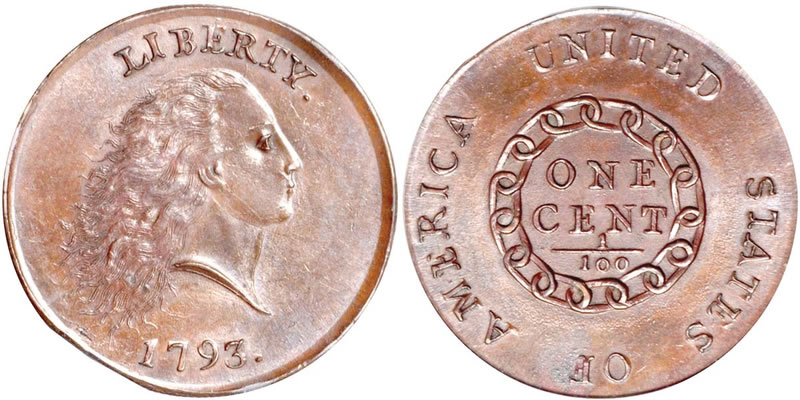
Voight’s design of Flowing Hair Liberty Large Cent with a wreath on the reverse
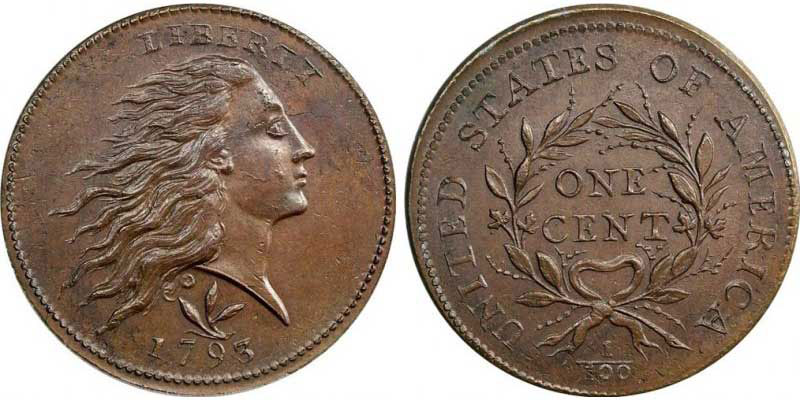
These cents contain eleven penny-weights of copper.
Liberty Cap Half Cent design officially made by Joseph Wright, but some believe it was designed by Henry Voight.
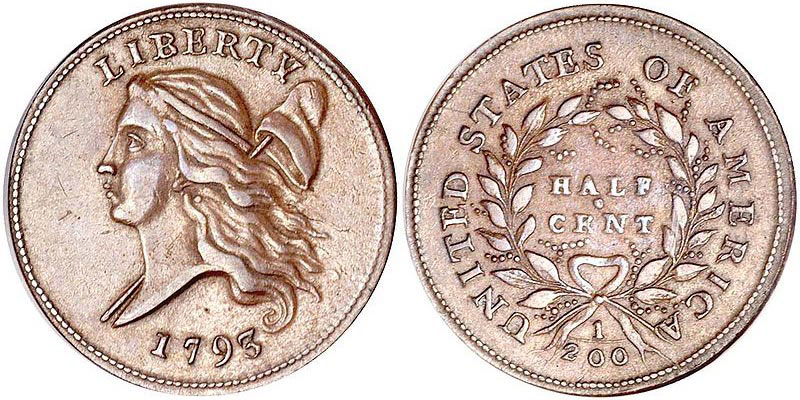
Voight also created and produced several rarer and uncommon coins, including the 1792 Silver Center Cent and the 1792 Half Disme.
1792 Silver Center Cent designed by Henry Voigt
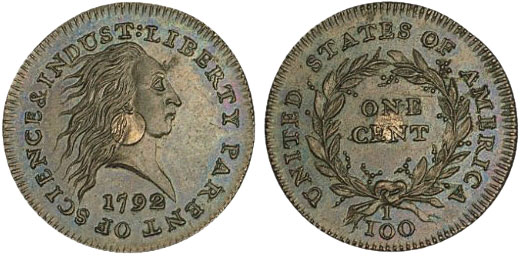
The 1792 Silver Cent was designed to help maintain intrinsic value by inserting silver metal in the center of the copper coin. The coin consists of the flowing hair liberty and the words “LIBERTY PARENT OF SCIENCE AND INDUST” with a wreath on the reverse side of the coin. However, this coin was too much work to reproduce and was disregarded and replaced by the pure Copper Large Cent. One of these coins sold for $414,000 in 2002 and PCGS offered an uncirculated MS61 grade silver center cent for over $1 million, according to the USA Coin Book.
The 1792 Half Disme
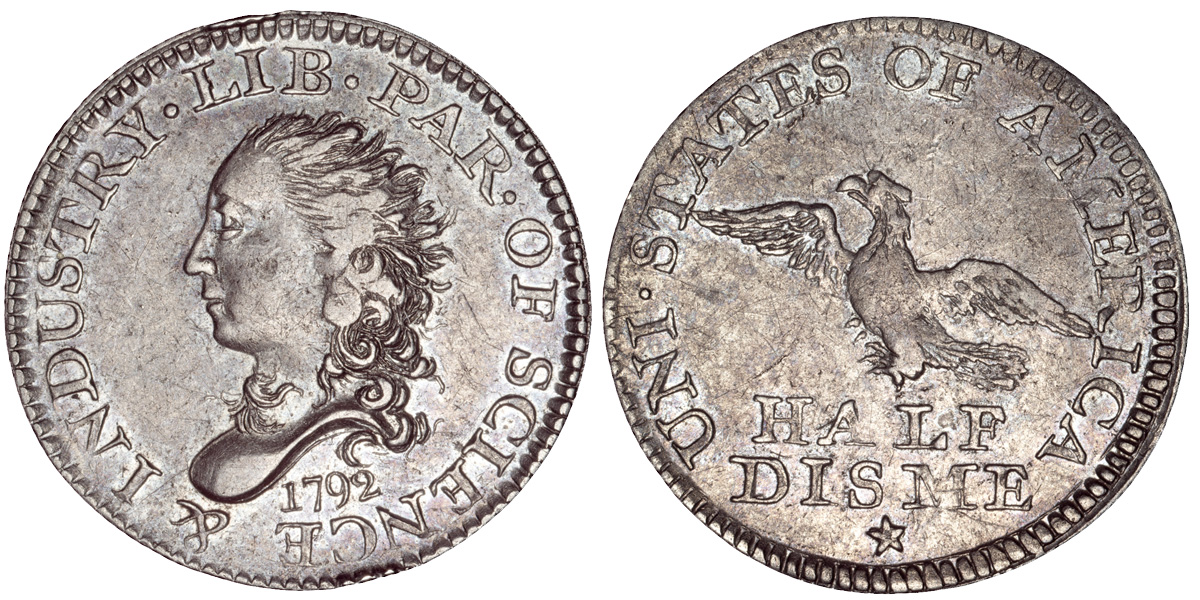
Voight played a key role in the production of the 1792 Half Disme. According to the Coinage Act of 1792, half dismes were to each “be the value of one twentieth of a dollar, and to contain eighteen grains and nine sexteenths parts of a grain of pure, or twenty grains and four fifth parts of a grain of standard silver.” These silver coins were fashioned in the basement of a local saw-maker shop in Philadelphia before the actual mint buildings had been completed, according to USA Coin Book. The article continues to explain that only 1500 of them were made and only 200-400 of these silver coins still exist today. One of the uncirculated coins was sold in 2006 for $1,322,00 and another for $1,500,0 in 2007, according to the USA Coin Book article.
From Copper to Gold Value – Today’s Investments Came From Yesterday’s Coins
The gold price and coins such as the American Eagle is what drives investment interest today, it is good to sometimes step back and understand the history of our money. It brings to light the timelessness of gold’s value and why gold and silver coins continue to be highly sought after.
Gold demand at record levels in Q1 2016
The World Gold Council reports that gold demand surged in the first three months of this year. That would certainly help explain why the price of gold has surged from $1,060 to nearly $1,300 in that time frame. They reported that the increase was driven by “huge” purchases of gold ETFs due to investor concerns regarding an uncertain financial landscape.
This is how we would expect the price of gold to act given such demand. However, in the coming years economic and financial system uncertainty will continue to be in the news. Thus while we expect significant volatility in the coming months, the long term price trend appears to have shifted from the sideways to down pattern we have experienced for the past four plus years. As always, we believe physical gold and silver bullion is the best way to own gold and silver.
The next 12 to 24 months should be a good time to dollar cost average into the market as we get set for a major change in the direction of the price of silver and gold and a possible multi-year bull market beyond 2017.
The Psychology Behind Avoidance Coping
The fear of bad news often prevents us from sustaining healthy lives. We cancel our dentist appointments the day before so we don’t have to hear if we’ve acquired new cavities. We avoid stepping on the scale so we don’t have to acknowledge the extra piece of birthday cake we somehow “misplaced.” And some of us ignore our bank statements so we don’t have to panic or feel overwhelmed with guilt when we go out for dinner with friends that evening.
This behavior is common, but it also can be crippling when it comes to financial health. The idea of “ignorance is bliss” might resonate with most of us and seem like a good approach when it comes to avoiding financial stress, but realistically, preparedness is security. And ignorant “bliss” isn’t really all that blissful when every time we swipe a card we wonder if we’re cutting it too close. Responsible and financially sound people should never voluntarily choose to live in ignorance.
For those of us wanting to live simpler lives and take ownership of our finances, it’s time to call out this behavior for what it is: avoidance coping.Read More
